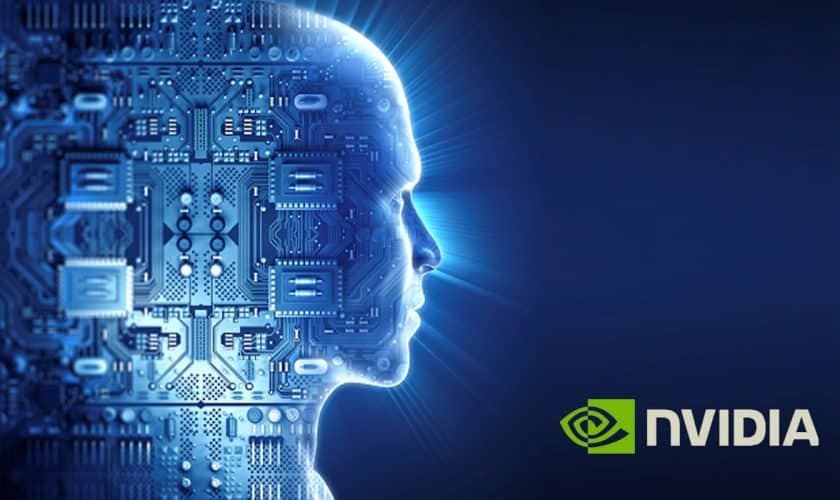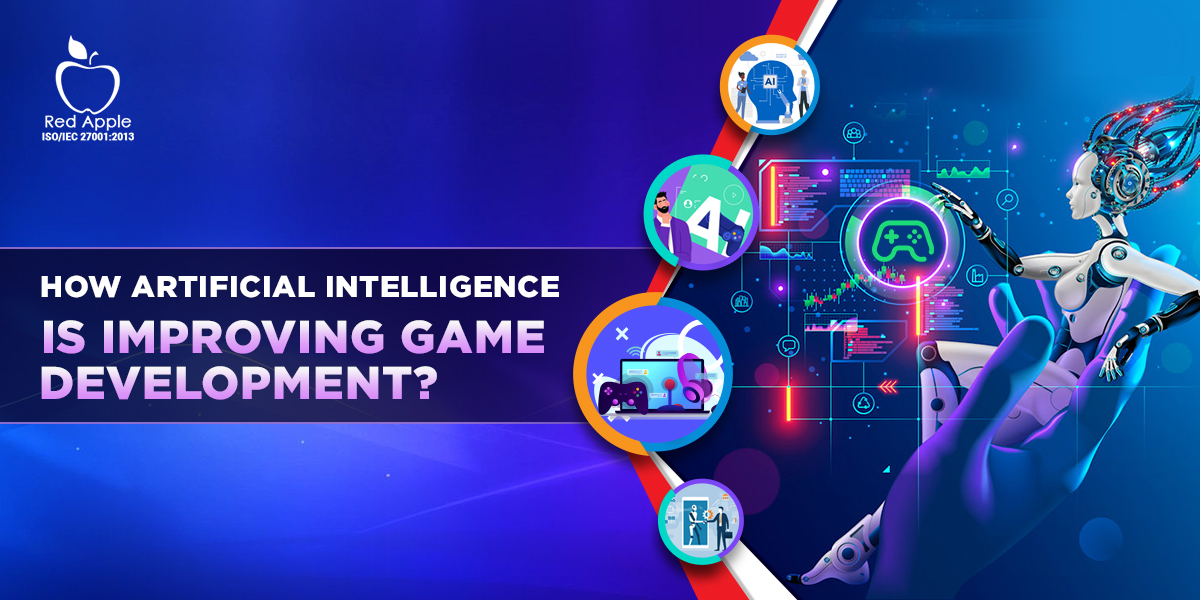
Introduction
It’s our pleasure to delve into the intriguing topic related to Nvidia: The Future of AI and Gaming is Limitless. Let’s weave interesting information and offer fresh perspectives to the readers.
Table of Content
- 1 Introduction
- 2 The Nvidia Empire: More Than Just Graphics Cards
- 3 The Power of the GPU: The Engine of AI
- 3.1 From Pixels to Predictions: The AI Revolution
- 3.1.1 Nvidia’s Role in Autonomous Vehicles
- 3.1.2 Nvidia’s Impact on Healthcare
- 3.2 The Gaming Landscape: Enhanced by AI
- 3.2.3 Ray Tracing: Realism Redefined
- 3.2.4 The Metaverse and Nvidia’s Role
- 4 Challenges and Counterarguments
- 4.3 The High Cost of Innovation
- 4.4 Environmental Concerns
- 5 The Future is Now: Nvidia’s Continued Innovation
- 6 FAQs
- 7 Closure
Nvidia: The Future of AI and Gaming is Limitless
The Nvidia Empire: More Than Just Graphics Cards
Let’s be honest, for many, Nvidia conjures images of high-end graphics cards, the kind that make your games look breathtakingly realistic. But Nvidia is so much more than just a purveyor of powerful GPUs. They’re quietly, and sometimes not-so-quietly, becoming a dominant force in the burgeoning world of artificial intelligence. Think about it: the same processing power that renders photorealistic landscapes in Cyberpunk 2077 is also being harnessed to power self-driving cars, diagnose medical conditions, and create stunningly realistic AI art. This isn’t just about faster frame rates; it’s about a fundamental shift in how we interact with technology, and Nvidia is at the forefront. We’re talking about a company that’s not just riding the wave of technological advancement, but actively shaping it. Their influence stretches far beyond the gaming community; it’s woven into the fabric of our increasingly AI-driven future. And that, my friends, is a story worth exploring.
The Power of the GPU: The Engine of AI
The core of Nvidia’s success lies in their Graphics Processing Units (GPUs). While initially designed for rendering graphics, GPUs possess a unique architecture perfectly suited for the parallel processing demands of artificial intelligence. Think of it like this: a CPU is like a highly skilled chef preparing a complex meal one dish at a time, while a GPU is like a massive, highly organized kitchen with dozens of chefs working simultaneously on different parts of the meal. This parallel processing capability allows GPUs to tackle the massive computational tasks required for training complex AI models with incredible speed and efficiency. This wasn’t a planned synergy; it was a happy accident, a serendipitous discovery that has propelled Nvidia to the forefront of the AI revolution. This unexpected advantage has allowed them to dominate the market and become synonymous with high-performance computing, a position they continue to solidify with each new generation of GPUs. The implications are vast, extending beyond gaming and into fields we might not even have considered a decade ago.
From Pixels to Predictions: The AI Revolution
The application of Nvidia’s GPUs in AI is breathtaking in its scope. We’re talking about breakthroughs in medical imaging, enabling doctors to detect diseases earlier and more accurately. We’re talking about self-driving cars, navigating complex environments with unprecedented safety. We’re talking about climate modeling, helping scientists understand and predict the impact of climate change. The possibilities seem endless, and Nvidia’s technology is at the heart of many of these advancements. Remember those early days of gaming graphics? The jump from pixelated sprites to photorealistic environments was astounding. Now, imagine that level of transformative change happening across entire industries. That’s the power of Nvidia’s contribution to the AI revolution – a revolution that’s only just beginning.
Nvidia’s Role in Autonomous Vehicles
The autonomous vehicle industry is a prime example of Nvidia’s impact. Their DRIVE platform provides the computational horsepower needed for self-driving cars to process sensor data in real-time, making critical driving decisions safely and efficiently. It’s not just about the hardware; Nvidia also provides the software tools and development platforms that enable companies to build and test their autonomous driving systems. This holistic approach, combining hardware and software expertise, has cemented Nvidia’s position as a key player in this rapidly evolving field. Think about the implications: safer roads, reduced traffic congestion, and increased accessibility for those who can’t drive themselves. Nvidia isn’t just building a future of faster gaming; they’re building a safer and more efficient future for everyone.
Nvidia’s Impact on Healthcare
The healthcare industry is another area where Nvidia’s technology is making a significant difference. GPUs are being used to accelerate medical image analysis, allowing for faster and more accurate diagnoses of diseases like cancer. Nvidia’s Clara platform provides a suite of tools and resources for developers to build AI-powered healthcare applications. Imagine a world where AI can detect subtle anomalies in medical images that might be missed by the human eye, leading to earlier interventions and better patient outcomes. This isn’t science fiction; it’s happening now, and Nvidia is playing a crucial role in making it a reality. The ethical considerations are complex, of course, but the potential benefits are immense. Nvidia’s contribution to this field represents a profound shift in how we approach healthcare, moving towards a more preventative and personalized approach.
The Gaming Landscape: Enhanced by AI
While AI is transforming industries beyond gaming, it’s also revolutionizing the gaming experience itself. Nvidia’s DLSS (Deep Learning Super Sampling) technology uses AI to upscale lower-resolution images to higher resolutions, resulting in stunning visuals with minimal performance impact. This means gamers can enjoy higher frame rates and sharper graphics without needing top-of-the-line hardware. It’s a win-win situation, allowing more people to access high-quality gaming experiences. Beyond DLSS, AI is being used to enhance other aspects of gaming, such as creating more realistic NPCs (non-player characters) and generating dynamic game worlds. The future of gaming is not just about more polygons; it’s about more immersive and intelligent experiences, powered by AI. This is a testament to Nvidia’s forward-thinking approach, constantly pushing the boundaries of what’s possible.
Ray Tracing: Realism Redefined
Nvidia’s advancements in ray tracing technology have also significantly impacted the gaming world. Ray tracing simulates the way light behaves in the real world, creating incredibly realistic lighting and reflections. While computationally demanding, Nvidia’s GPUs are capable of handling the processing power needed for real-time ray tracing, bringing a new level of realism to games. Think about the difference between a painting and a photograph; ray tracing brings that photographic realism to gaming, enhancing immersion and creating a more believable game world. It’s a testament to Nvidia’s commitment to pushing the boundaries of visual fidelity in gaming, continuously improving the quality and realism of gaming experiences.
The Metaverse and Nvidia’s Role

The metaverse is another area where Nvidia is making significant strides. Their Omniverse platform provides a collaborative 3D design and simulation environment, enabling creators to build and interact with virtual worlds. This has implications for everything from game development to architectural design to industrial simulation. Imagine architects walking through a virtual building before it’s even built, identifying potential problems and making changes before construction begins. Or imagine game developers collaborating on a virtual world in real-time, seamlessly integrating assets and features. Nvidia’s Omniverse is not just a tool; it’s a platform for innovation, enabling collaboration and accelerating the creation of immersive digital experiences. The metaverse is still in its early stages, but Nvidia is playing a crucial role in shaping its development.
Challenges and Counterarguments
While Nvidia’s dominance in the GPU market is undeniable, it’s not without its challenges. The high cost of their products can be a barrier to entry for many consumers and businesses. Furthermore, concerns about the environmental impact of manufacturing and using high-performance GPUs are increasingly prominent. Competition from companies like AMD and Intel is also intensifying, pushing Nvidia to innovate and maintain its leading position. These challenges highlight the importance of sustainable practices and continuous innovation in the tech industry. Nvidia’s response to these challenges will determine its long-term success and influence.
The High Cost of Innovation
The price tag associated with Nvidia’s high-end GPUs is a significant factor to consider. While the performance is undeniably impressive, the cost can be prohibitive for many gamers and professionals. This creates a barrier to entry, limiting access to the cutting-edge technologies Nvidia offers. Nvidia needs to find a balance between innovation and affordability to ensure its technology is accessible to a wider audience. This requires careful consideration of manufacturing costs, pricing strategies, and the development of more cost-effective solutions. Striking this balance is crucial for Nvidia’s continued success and wider adoption of its technologies.
Environmental Concerns
The energy consumption of high-performance GPUs is a growing concern. The manufacturing process and the power required to run these powerful chips contribute to carbon emissions. Nvidia is aware of these concerns and is actively working on developing more energy-efficient GPUs. However, the environmental impact of their products remains a significant challenge that needs to be addressed proactively. This involves not only improving the energy efficiency of their hardware but also promoting sustainable manufacturing practices and responsible disposal methods. Addressing these concerns is essential for Nvidia’s long-term sustainability and ethical responsibility.
The Future is Now: Nvidia’s Continued Innovation
Looking ahead, Nvidia’s future seems bright. Their continued investment in research and development, coupled with their strong position in both the gaming and AI markets, positions them for continued growth and innovation. The convergence of gaming and AI is likely to create even more exciting opportunities, blurring the lines between virtual and real worlds. Nvidia is well-positioned to capitalize on these trends, shaping the future of technology in profound ways. Their commitment to innovation, coupled with their ability to adapt to the ever-changing technological landscape, ensures their continued relevance and influence.
Nvidia’s journey is a testament to the power of innovation and the importance of recognizing and capitalizing on unexpected opportunities. From humble beginnings as a graphics card manufacturer, they’ve evolved into a powerhouse in the AI revolution, shaping the future of gaming, healthcare, autonomous vehicles, and countless other industries. Their story is a reminder that the future is not predetermined; it’s shaped by the bold vision and relentless pursuit of innovation of companies like Nvidia. The future of AI and gaming is indeed limitless, and Nvidia is leading the charge.
FAQs
- What is Nvidia’s main competitive advantage? Nvidia’s primary competitive advantage lies in its highly advanced GPU architecture, perfectly suited for both high-performance gaming and the parallel processing demands of AI.
- How does Nvidia’s technology impact the healthcare industry? Nvidia’s GPUs accelerate medical image analysis, enabling faster and more accurate diagnoses of diseases. Their Clara platform provides tools for developing AI-powered healthcare applications.
- What is the environmental impact of Nvidia’s products? The energy consumption of Nvidia’s high-performance GPUs is a growing concern. The company is working on developing more energy-efficient solutions and promoting sustainable practices.
- How is Nvidia involved in the development of the metaverse? Nvidia’s Omniverse platform provides a collaborative 3D design and simulation environment, enabling the creation and interaction with virtual worlds.
- What are the future prospects for Nvidia? Nvidia’s strong position in both gaming and AI, coupled with continued investment in R&D, suggests a bright future with continued growth and innovation.

Closure
In conclusion, we hope this article has provided valuable insights into Nvidia: The Future of AI and Gaming is Limitless. We hope you enjoyed reading and found it insightful. See you in our next article!


